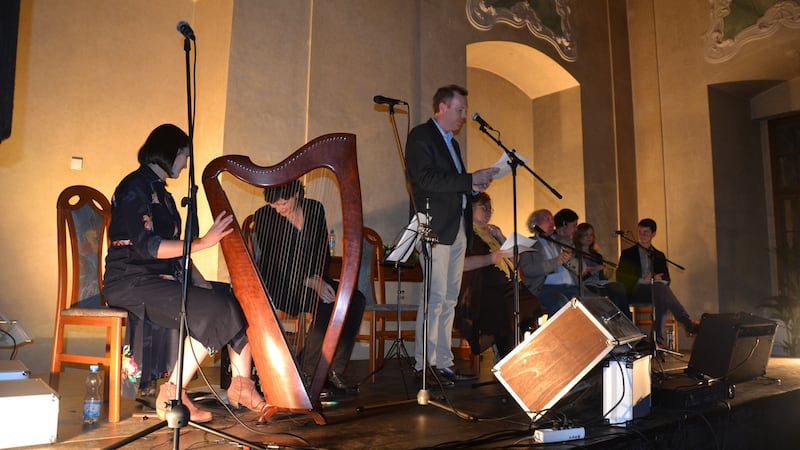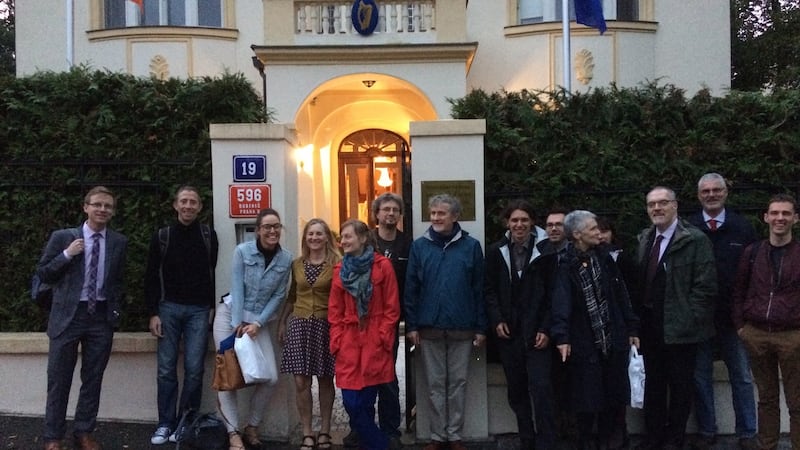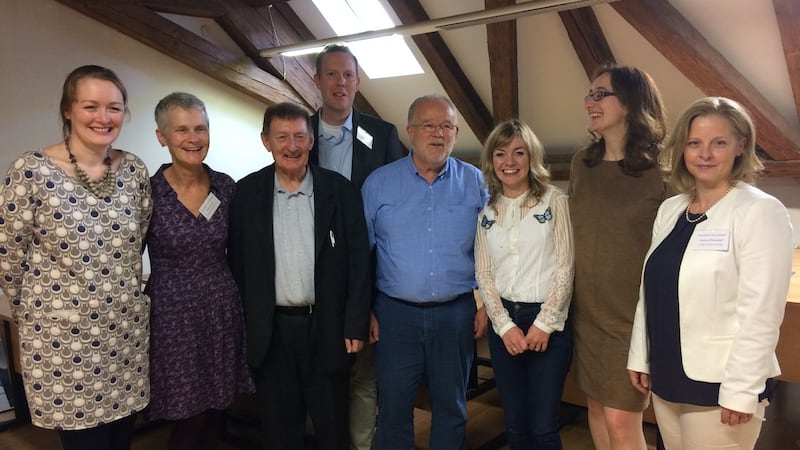Some of the Irish passengers on Aer Lingus flight E10644 to Prague on September 13th were surprised to find themselves surrounded by clusters of Irish speakers on their way to an international Irish-language conference hosted by the Centre for Irish Studies, Charles University, Prague.
“What’s happening?” said the person in the seat beside me and his surprise was palpable when I told him that I would be spending the next few days at an academic gathering where 60 papers would be presented in Irish by scholars based in Ireland, England, France, Finland, Poland, Italy, North America and the Czech Republic itself.
The title of the conference was Ar an Imeall i Lár an Domhain (On the Periphery in the Centre of the World) and its theme was liminality in Irish and European literature and culture. It was the brainchild of Dr Radvan Markus, a literary scholar and lecturer in the Centre for Irish Studies in Charles University, whose Czech translation of Máirtín Ó Cadhain's Cré na Cille is due for publication shortly.

The Irish language has been taught in Charles University ever since Brian Ó hEithir, son of journalist and fiction writer Breandán Ó hEithir, taught a class there 26 years ago. Its position on the curriculum has been strengthened in recent years, however, and Markus himself is an example of someone whose personal “turas teanga” has taken him from an undergraduate ab initio course to mastery of the language. There is a very close relationship between language teaching, literary studies and translation studies in Charles University. In a country with high levels of bilingualism and plurilingualism, students will often take a beginners’ course in Irish or another Celtic language out of linguistic interest. Its status as a minoritised language is not a huge concern for students whose national language is itself a minor language in a broader international context. Those Czech students who pursue their studies at a more advanced level, however, are usually motivated by a deeper interest in Irish literature and culture and see the language as a means of access to valuable literary and historical sources and resources.
Markus translated the historical novel L'Attaque by Eoghan Ó Tuairisc before embarking on a critical study of the 1798 rebellion as represented in 20th-century Irish literature (published by Peter Lang in 2015 in its Reimagining Ireland series). The Irish Ambassador to the Czech Republic, Charles Sheehan, who welcomed delegates to his residence for a reception, expects that the launch of the Czech translation of Cré na Cille will be a very significant literary event.
Translations like these are bringing new critical perspectives to bear on Irish literature and providing material for rich cross-cultural comparisons. Markus's paper at the conference situated Cré na Cille firmly within the European carnivalesque tradition, suggested comparison with the structure of a Baroque musical composition, while also comparing Ó Cadhain's absurdist humour to that of Jaroslava Hašek in his acclaimed The Good Soldier Švejk, the most translated work of creative prose in modern Czech. The Centre for Irish Studies encourages advanced students of Irish to translate literary texts. Daniela Theinová, who presented a paper on contemporary poetry, has translated the work of a range of English-language and Irish-language poets and prose writers. Her translation of Pádraic Ó Conaire's novel Deoraíocht (1910) was the first Czech translation of an Irish-language novel.


One of the keynote speakers at the conference was Prof Mícheál Mac Craith OFM, who travelled to Prague from Collegio San Isidore in Rome. Mac Craith was influential in building the Irish-language programme in Charles University at the turn of the millennium when, while professor of modern Irish at NUI Galway, he served as a regular guest lecturer on the Irish studies programme. He has retained close ties with the centre ever since. As an expert on the history of the Irish Franciscans in Europe, his lecture on the relationship between the Franciscan houses and the centres of Habsburg power in Rome, Louvain and Prague was a multi-faceted analysis of the relationship between politics and religion in 17th-century Europe. Czech-Irish relations were an important theme throughout the conference which ran from September 14th-16th, and the historical link between the countries was underscored by the conference being held in the Sweerts-Špork palace in Hybernská street, just a few steps from the former Irish Franciscan college, established in 1629.
The multidisciplinarity of Irish-language studies as practised both in Ireland and internationally was a marked feature of the conference. From the opening keynote address by Dr Rióna Ní Fhrighil on contemporary poetry and human rights discourse to the final keynote lecture by Prof Alan Titley on vernacular attitudes to institutionalised religion, the programme included papers on medieval manuscripts and 17th-century Irish migration as well as subjects as contemporary as European language education policy and design issues in digital publication.
As part of the conference programme, delegates were taken on a guided tour of the library of Strahov Monastery by Jan Parez, co-author of The Irish Franciscans in Prague 1629-1786 (2015), followed by a public poetry reading and musical performance in one of the monastery's Baroque halls. It was a magical environment in which to hear poet Nuala Ní Dhomhnaill recite some of her best-loved poems, accompanied by translators Daniela Theinová agus Martin Svetlík. Alan Titley also read stories and poems and the readings were interspersed with harp music and songs in Irish by Síle Denvir, and with songs in Irish, Czech and Catalan by Katerina García and Pádraig Ó Liatháin.
In his closing remarks to conference delegates, Markus drew their attention to next year's annual conference of the International Association for the Study of Irish Literatures, to be held in the University Radboud Nijmegen in the Netherlands. The theme is Athshamhlú Traidisiún/ Re-Imagining Traditions and papers by Irish-language scholars are welcomed. It won't come as a surprise if a lot of Irish is heard at that conference. The threshold was crossed in Prague and there is no going back!
Máirín Nic Eoin is Emerita Professor of Irish, Dublin City University. She was one of the co-editors of the two-volume Litríocht na Gaeilge ar fud an Domhain (2015).















